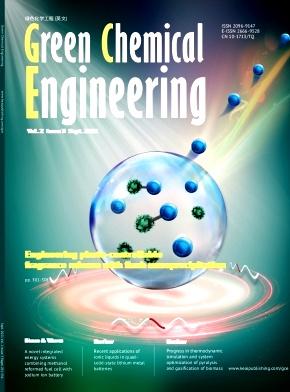CO2 capture and conversion using graphene-based materials: a review on recent progresses and future outlooks
IF 7.6
Q1 ENGINEERING, CHEMICAL
引用次数: 0
Abstract
Rapidly increasing global atmospheric carbon dioxide (CO2) concentration poses a serious threat to life on Earth. Conventional CO2 capture methodologies which rely on using sorbents to capture CO2 from point sources while effective in curbing the rate of CO2 increase, fall short of achieving net reduction. The last decade has witnessed a surge in the development of chemical sorbents cycled through adsorption-desorption processes for CO2 extraction from low-concentration sources like air (e.g., Direct Air Capture (DAC)). However, the efficiency of these technologies hinges on the creation of next-generation materials. Graphene, a revolutionary material discovered about two decades ago, offers great promise for CO2 capture and conversion. This single-atom-thick sheet of sp2-hybridized carbon atoms has unique and tuneable properties, solidifying its position as the most extensively studied nanomaterial of the 21st century. This review provides a comprehensive overview of the developing field of graphene-based materials for CO2 capture and conversion. The discussion begins with an exploration of the synthesis techniques for graphene and the integration of foreign elements to tune its properties for targeted applications. Subsequently, the review discusses the utilization of graphene and its derivatives in both CO2 capture and conversion processes, encompassing photocatalytic and electrocatalytic conversion methods. Despite the immense potential, the practical implementation of graphene-based DAC necessitates further exploration and development. Notably, engineering efficient of graphene-air interfacial contact is paramount to expediting the deployment of DAC as a viable strategy for mitigating climate change. The review concludes by highlighting gaps for future research to tackle challenges in this critical area of environmental pollution mitigation.

利用石墨烯基材料捕集和转化二氧化碳:近期进展及未来展望
全球大气中二氧化碳(CO2)浓度的迅速增加对地球上的生命构成了严重威胁。传统的二氧化碳捕获方法依赖于使用吸附剂从点源捕获二氧化碳,同时有效地抑制二氧化碳的增长速度,但无法实现净减少。在过去的十年中,化学吸附剂的发展激增,通过吸附-解吸过程循环从空气等低浓度源中提取二氧化碳(例如,直接空气捕获(DAC))。然而,这些技术的效率取决于下一代材料的创造。石墨烯是大约20年前发现的一种革命性材料,它为二氧化碳的捕获和转化提供了巨大的希望。这种单原子厚的sp2杂化碳原子片具有独特的可调谐特性,巩固了其作为21世纪研究最广泛的纳米材料的地位。本文综述了石墨烯基二氧化碳捕集与转化材料的研究进展。讨论开始于石墨烯的合成技术的探索和外来元素的整合,以调整其特性的目标应用。随后,本文讨论了石墨烯及其衍生物在二氧化碳捕获和转化过程中的应用,包括光催化和电催化转化方法。尽管石墨烯基DAC具有巨大的潜力,但其实际应用还需要进一步的探索和发展。值得注意的是,石墨烯-空气界面接触的工程效率对于加速DAC作为缓解气候变化的可行策略的部署至关重要。报告最后强调了未来研究的差距,以应对减轻环境污染这一关键领域的挑战。
本文章由计算机程序翻译,如有差异,请以英文原文为准。
求助全文
约1分钟内获得全文
求助全文
来源期刊

Green Chemical Engineering
Process Chemistry and Technology, Catalysis, Filtration and Separation
CiteScore
11.60
自引率
0.00%
发文量
58
审稿时长
51 days
 求助内容:
求助内容: 应助结果提醒方式:
应助结果提醒方式:


